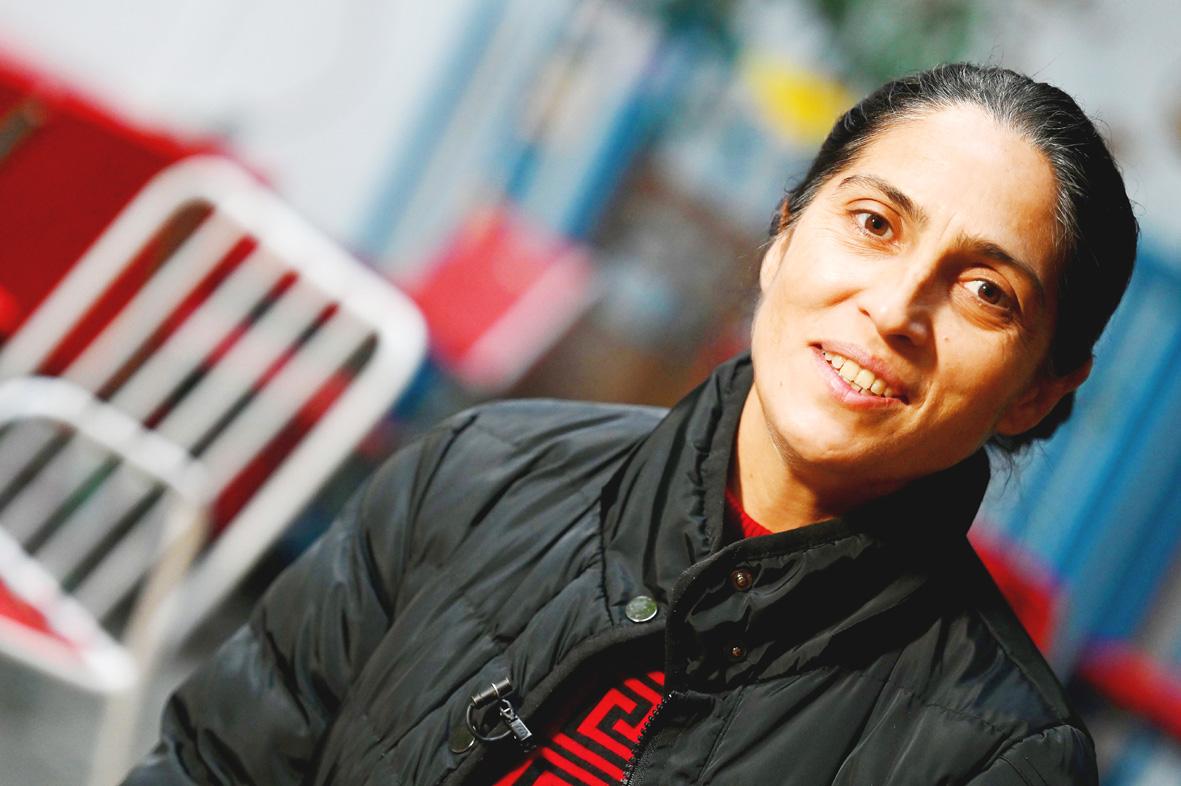Monika Lakatos, a celebrated singer of “Olah Gypsy” music from Hungary, has become the first Romani artist to receive the prestigious World Music Expo (WOMEX) lifetime achievement award.
Soft-spoken but with a passionate singing voice, the 42-year-old hails from the tiny Olah Gypsy community, a branch of the Romani ethnic minority, Hungary’s largest at around seven percent of its population of 9.8 million.
“I am proud to win it as both a Gypsy and a Hungarian,” the diminutive dark-haired singer, said Saturday before she received the award at a WOMEX gala concert in Budapest.

Photo : AFP
Previous winners include Senegalese performer Cheikh Lo and Portuguese fado legend Mariza.
The award was “timely” given the contribution of Romani artists to the world’s musical culture, WOMEX jury member Balazs Weyer said.
Lakatos was recognized for her “outstanding artistry, as well as her social impact and personal dedication to keeping alive the Olah Gypsy tradition,” Weyer said.
“Her pure voice has such an immediate effect, you can see the change in the eyes of people listening,” he said.
The distinctive Olah singing style emphasizes tone and spontaneity, with a repertoire of lyrical “listening” songs and danceable “whirling” ones.
Unlike more widely known strings-based Hungarian Gypsy music, the Olah version uses traditional percussive instruments like water urns, wooden tubs and spoons, as well as a beatbox-like sound called “vocal-bassing.”
“The Olah style is the soul of Gypsy music, it’s a living culture, life weaves the songs together,” Lakatos said.
Olah Gypsies migrated from neighboring Romania in the 19th century and now number only around 30,000 people. Most live in rural northeast Hungary near Nagyecsed, a village 250km east of Budapest.
Traditionally horse traders and traveling salesmen, many Olah Gypsies now struggle with deep poverty.
Within its male-dominated community, Lakatos, born in Budapest but with roots in Nagyecsed, says its members respect traditions like not holding hands or declaring love in public.
“We do that through song and dance instead,” she said.
After learning traditional Olah Gypsy music with cousins and friends as a child, Lakatos won a national TV talent show in 1996 aged 17.
Now she fronts acclaimed ensemble Romengo and performs in a duo with her musician husband Mazsi Rostas.
A mother-of-one, her daughter also occasionally sings in another of her groups Gypsy Voices, which promotes young, mainly female, Olah singing talents.
“It’s important that this musical culture is passed on at home, in case later generations are only able to learn about it from books,” she said.
Lakatos also celebrates what she calls her “dual identity as a Hungarian Gypsy.”
The Romani, often on the receiving end of discrimination, face widespread exclusion from mainstream Hungarian society.
But “our common language of music is a link bringing people together,” she said, adding that festival-goers in Hungary often tell her after concerts that they didn’t know about Olah Gypsy music until seeing her.
“If people don’t know a culture then maybe they can be afraid or suspicious of it,” she noted.

In the next few months tough decisions will need to be made by the Taiwan People’s Party (TPP) and their pan-blue allies in the Chinese Nationalist Party (KMT). It will reveal just how real their alliance is with actual power at stake. Party founder Ko Wen-je (柯文哲) faced these tough questions, which we explored in part one of this series, “Ko Wen-je, the KMT’s prickly ally,” (Aug. 16, page 12). Ko was open to cooperation, but on his terms. He openly fretted about being “swallowed up” by the KMT, and was keenly aware of the experience of the People’s First Party

Aug. 25 to Aug. 31 Although Mr. Lin (林) had been married to his Japanese wife for a decade, their union was never legally recognized — and even their daughter was officially deemed illegitimate. During the first half of Japanese rule in Taiwan, only marriages between Japanese men and Taiwanese women were valid, unless the Taiwanese husband formally joined a Japanese household. In 1920, Lin took his frustrations directly to the Ministry of Home Affairs: “Since Japan took possession of Taiwan, we have obeyed the government’s directives and committed ourselves to breaking old Qing-era customs. Yet ... our marriages remain unrecognized,

Not long into Mistress Dispeller, a quietly jaw-dropping new documentary from director Elizabeth Lo, the film’s eponymous character lays out her thesis for ridding marriages of troublesome extra lovers. “When someone becomes a mistress,” she says, “it’s because they feel they don’t deserve complete love. She’s the one who needs our help the most.” Wang Zhenxi, a mistress dispeller based in north-central China’s Henan province, is one of a growing number of self-styled professionals who earn a living by intervening in people’s marriages — to “dispel” them of intruders. “I was looking for a love story set in China,” says Lo,

During the Metal Ages, prior to the arrival of the Dutch and Chinese, a great shift took place in indigenous material culture. Glass and agate beads, introduced after 400BC, completely replaced Taiwanese nephrite (jade) as the ornamental materials of choice, anthropologist Liu Jiun-Yu (劉俊昱) of the University of Washington wrote in a 2023 article. He added of the island’s modern indigenous peoples: “They are the descendants of prehistoric Formosans but have no nephrite-using cultures.” Moderns squint at that dynamic era of trade and cultural change through the mutually supporting lenses of later settler-colonialism and imperial power, which treated the indigenous as